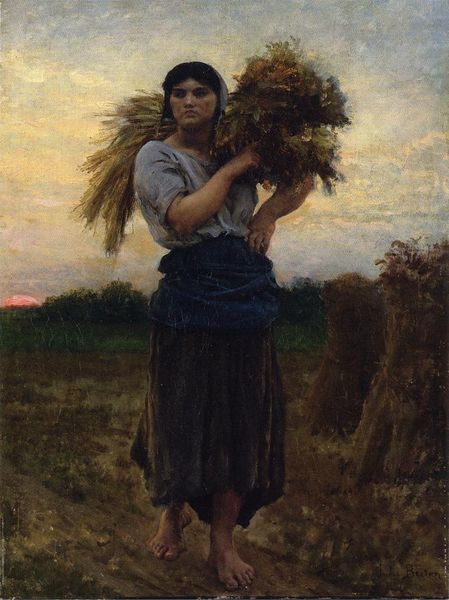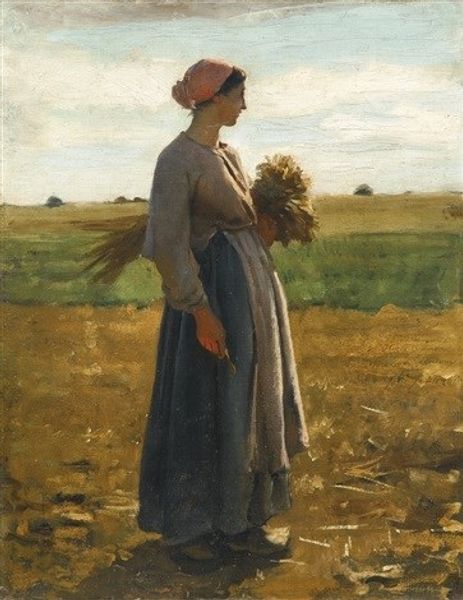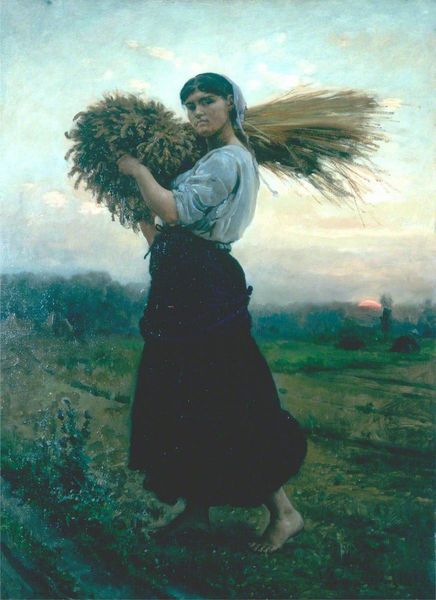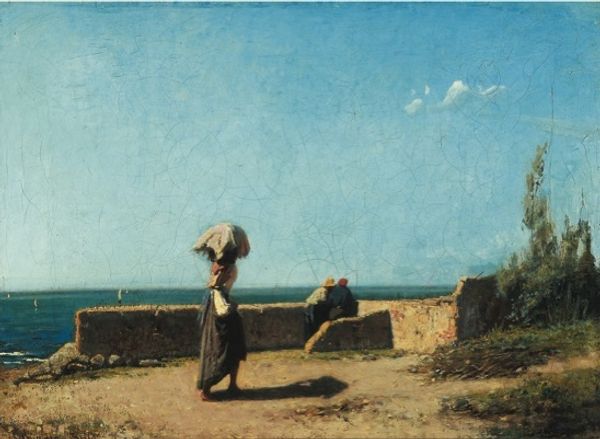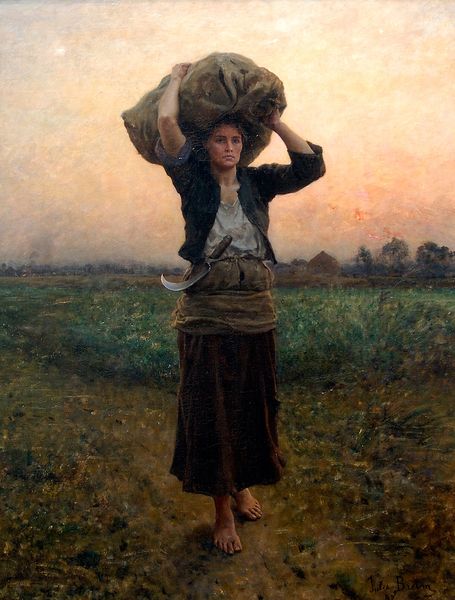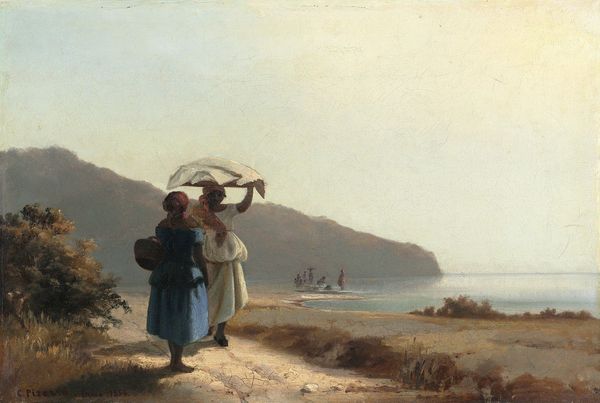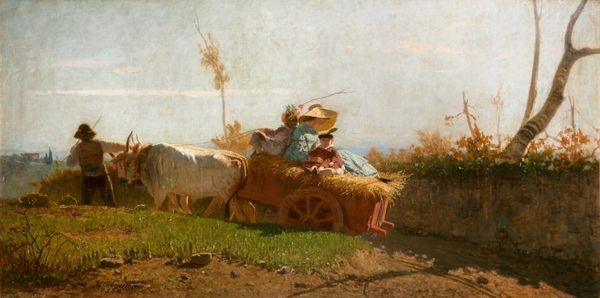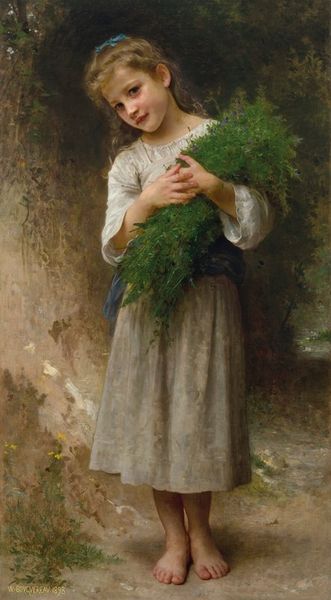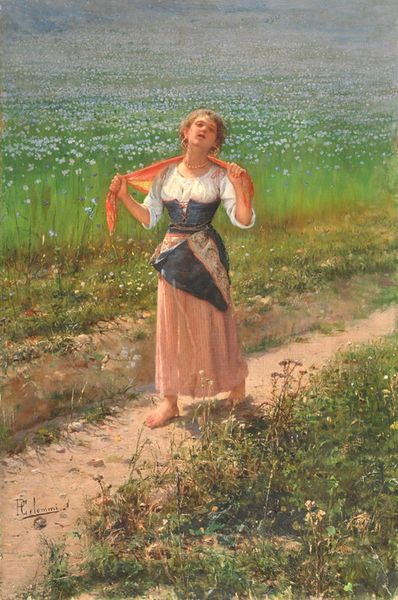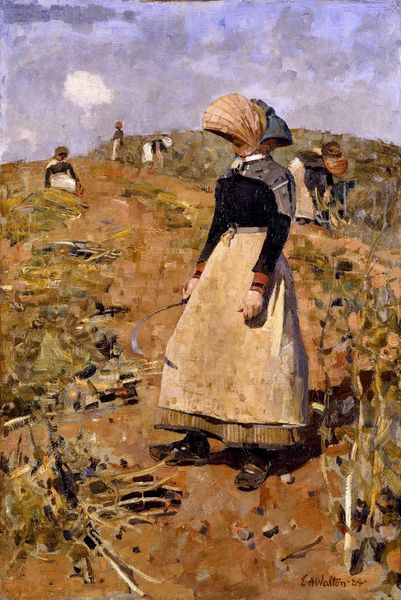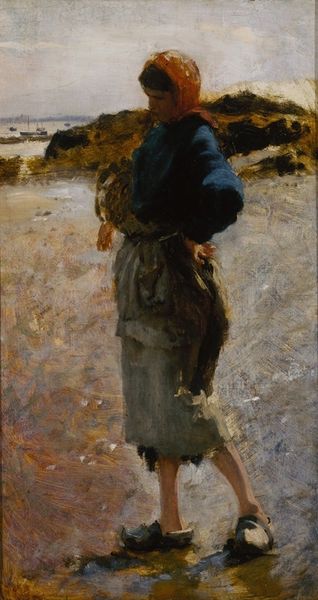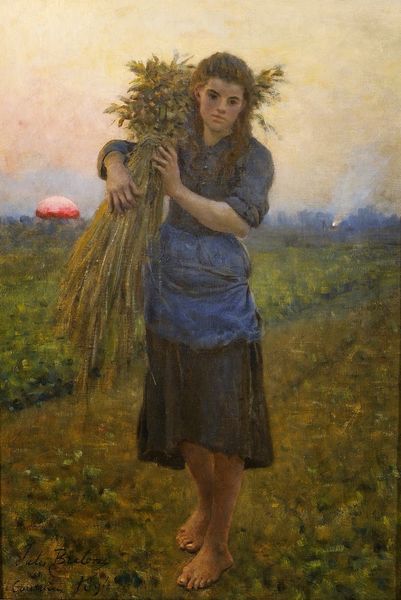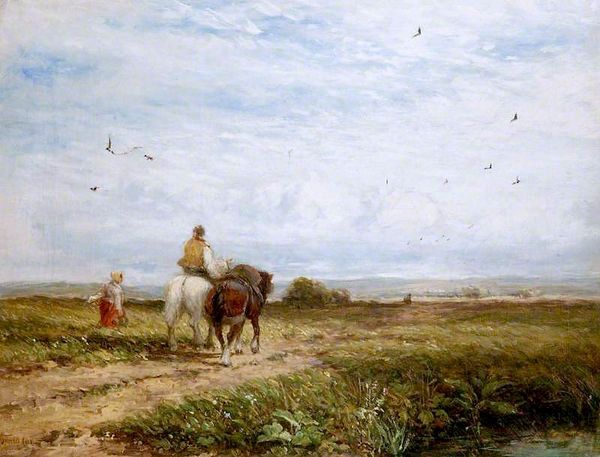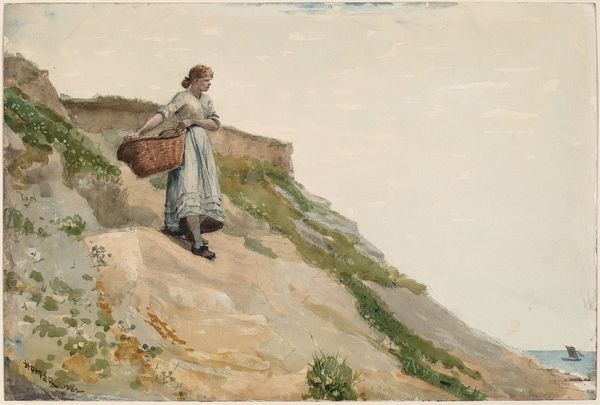
Copyright: Public domain
Curator: It makes me think of lazy summer afternoons and childhood daydreams, bathed in golden light... sort of nostalgic. Editor: You've just picked up on something essential. This is "Summer," painted in 1901 by Pasquale Celommi, an Italian artist deeply immersed in the style of Impressionism and known for his plein-air works capturing daily life. Curator: Right, plein-air—you can really feel that sense of being there, right in the field with the woman and that impossibly heavy looking bundle of wheat on her head! Does that posture carry some deeper symbolic meaning? It feels so timeless and laden, both burdened and beautiful... Editor: It's quite evocative isn't it? Celommi’s piece reverberates with visual echoes from the classical world where similar figures evoke the continuity between the human, natural, and spiritual domains. He skillfully captures the enduring symbol of the harvest and the nurturing earth and connects to much older cultural memories. Curator: It’s funny; I’d have thought it would evoke themes of the harvest—something robust and abundant! It’s those muted colors, all earth tones, but very faint that are really shaping my response—so somber. Does the muted color palette contrast with that symbolism for you? Editor: Not exactly contrast, but perhaps complicates it. Impressionism does often focus on the ephemeral, fleeting moments and states. Here, perhaps it acknowledges the relentless cycle of nature, where even abundance is tinged with a kind of exhaustion or melancholy. It reminds us of the impermanence in every harvest. And those open horizons of Celommi are an attempt to embrace it, visually. Curator: That's interesting; the vast, muted landscape stretching out on both sides reinforces that feeling...almost hinting at future harvests...of similar burdens and joys to be borne. The Impressionist rendering softens it even more; is the painting, I wonder, designed to evoke the emotional connection to the woman? It feels somehow psychologically true—that physical burdens are so tied to our moods. Editor: I’d say yes—and consider the era it was created. In a time of rapid change, artists like Celommi were turning to simpler themes and celebrating rural life as a kind of sanctuary and perhaps more in tune to older continuities of spiritual life. I believe these qualities contribute much to our response as well. Curator: That all makes perfect sense, placing Celommi in context deepens the way the painting seems to both carry memory and suggest timeless continuities...almost making me smell hay and warm summer dust! Editor: Indeed—he certainly left us much to ponder, about art, about human work, and about how landscapes hold our cultural memories.
Comments
No comments
Be the first to comment and join the conversation on the ultimate creative platform.
